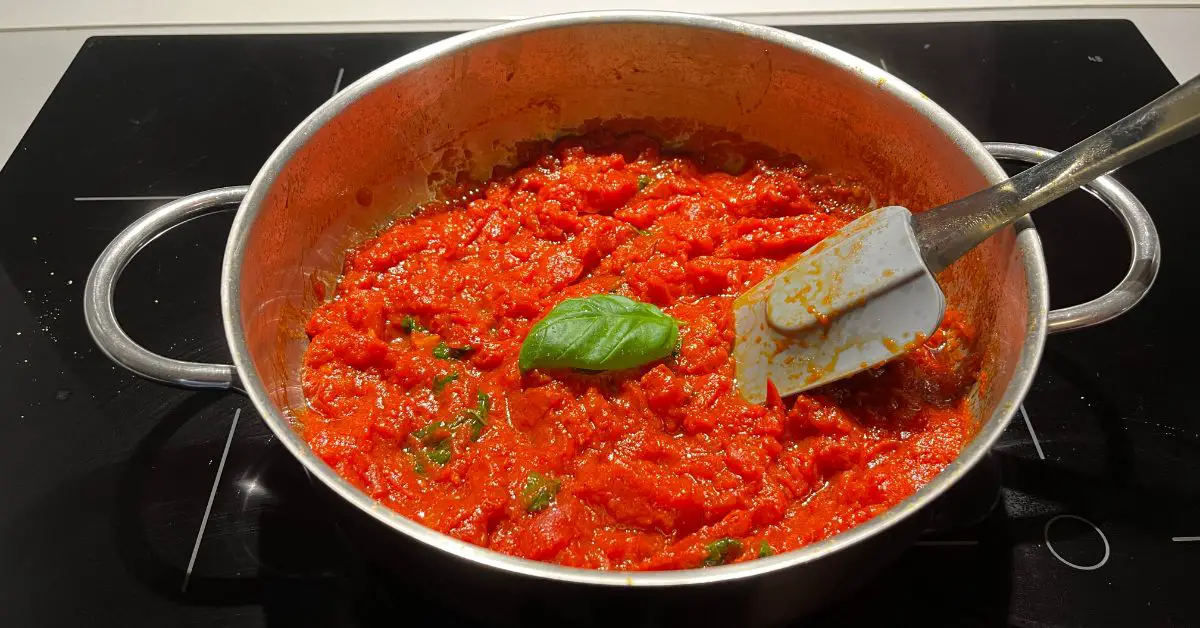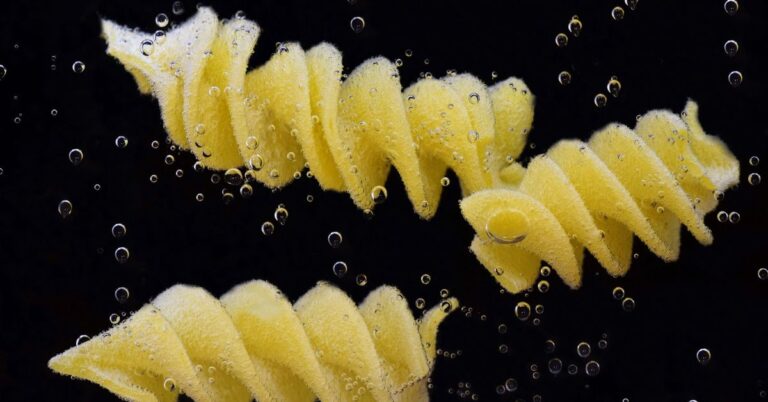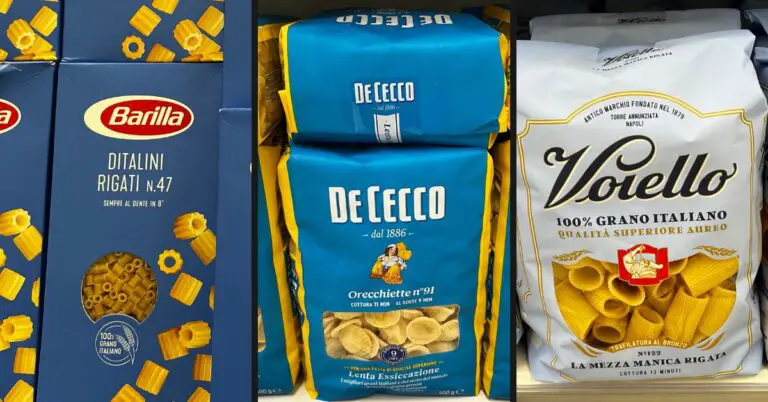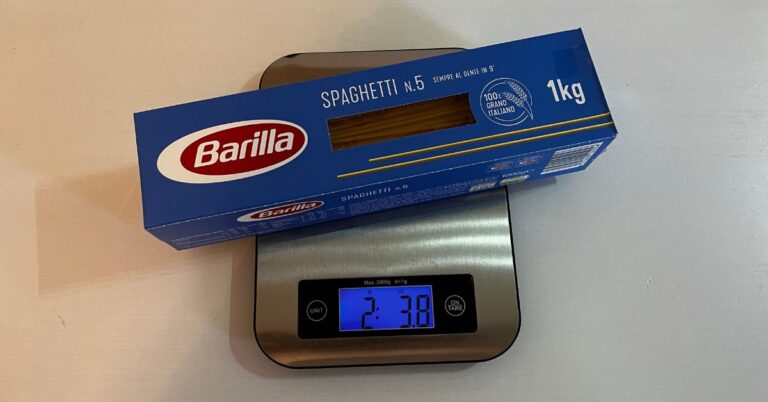As an Italian, I’ve noticed that in America there’s a perception of marinara sauce and pasta alla marinara as two typically Italian recipes. While this is partly true, there are now substantial differences that could lead to confusion.
Let’s clear this up right away:
- The American version of marinara sauce often contains celery and onion, which significantly differs from the Italian version. If there are oregano, garlic, and tomato, then it’s a marinara! Check out the authentic recipe for Italian marinara sauce here.
- In Italy, marinara is most commonly linked with pizza, and it’s rare to find it paired with pasta, as pasta alla marinara isn’t a traditional Italian dish. Instead, there’s pasta al pomodoro, which only shares tomatoes as a common ingredient with marinara sauce, not the rest.
- Italy’s culinary tradition boasts a range of tomato-based sauces such as sugo, ragù, alla pizzaiola, and puttanesca, each with unique ingredients and methods of preparation. All these are tomato-based sauces, but as you can see, marinara is not among them.
Here’s why asking in Italy, “What’s the difference between marinara and spaghetti sauce?” wouldn’t make sense, because marinara as a pasta sauce isn’t really considered at all.
Explore the unique Italian-American cuisine not seen in Italy – click to discover!
The “marinara” recipes, in Italy, bring together a series of preparations and variations of which the most popular is the marinara pizza: the cheapest option present on a pizzeria menu since there is no mozzarella cheese on it, and the sure-fire choice for those who love simple flavours or, maybe, people who are vegan or lactose intolerant and, therefore, to the mozzarella of the classic margherita.
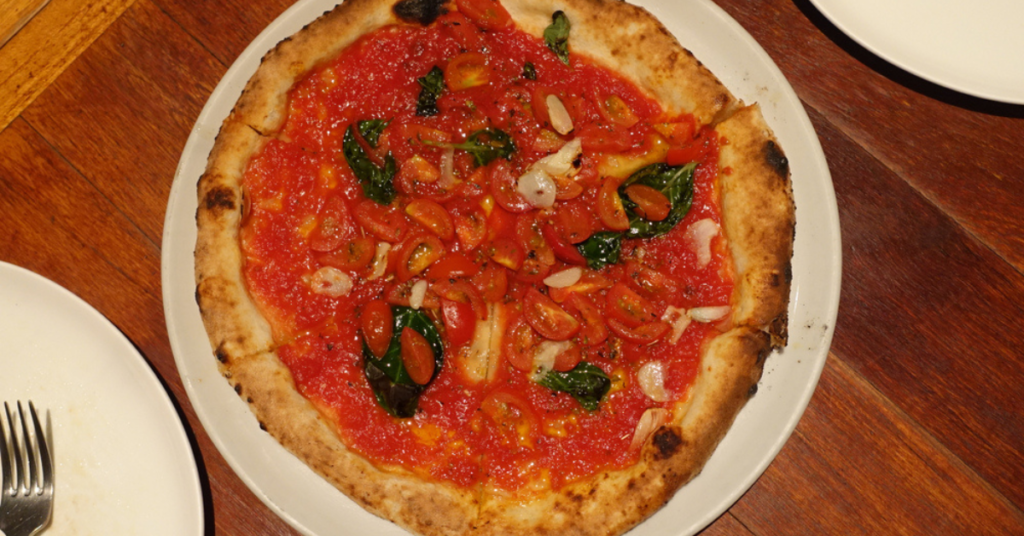
Pasta alla marinara isn’t really a big thing in Italy, even though it’s made with similar ingredients. But here’s the twist: if you do find a restaurant in Italy serving pasta alla marinara, they’re likely to dish up pasta with a seafood sauce, packed with fish and shellfish. That’s because “alla marinara” in Italy means “in the style of the sailor.“
So, just to clear things up, when Italians talk about “alla marinara sauce,” they’re usually thinking of pizza, not pasta smothered in that sauce.
But why is it called “marinara sauce”?
“Marinara” in Italian ties back to life at sea. Legend has it that back in the 18th century, Neapolitan fishermen whipped up the first marinara pizza. They needed something hot, delicious, and quick to make during long nights out fishing (where the fresh fish market springs to life at dawn).
Originally, local bakers made focaccias quite different from what we’re used to, often topped with anchovies or other small fish typically used in mixed fries. That’s why some modern takes on marinara still feature seafood.
Another theory suggests that sailors favored this pizza for its easy storage and simple ingredients. Fun fact: tomatoes weren’t even part of the initial recipe!
Pasta alla marinara: a weird idea to look for in an Italian restaurant
In Italian restaurants, ask for a pizza or focaccia alla marinara or meat alla pizzaiola (later I will explain what it is) and you will be immediately understood and satisfied. I doubt you will get the same result by ordering a pasta alla marinara dish; not because it is a concept unknown to us but, more than anything else, because it is not part of our culinary tradition.
And then, are you really sure that this kind of order in Italy would meet your expectations?
The American marinara sauce, indeed, includes very different ingredients from the Italian sauce that have the same name: oregano is often replaced by celery and onion takes the place of garlic. Pretty much another thing!
What marinara is NOT
I know, I know, we Italians have built an entire culinary universe around tomatoes in which it is as easy to get lost as in a labyrinth. I will give you a small diagram, which can be very useful if you find yourself in my country:
- tomato sauce – is what we simply call “sugo”, obtained by cooking the tomato pulp in extra virgin olive oil;
- tomato puree – it is the classic tomato-based food preserve (raw, therefore canned/jar/bottled);
- alla marinara – tomato sauce cooked with salt, oregano and garlic; occasionally it can also host anchovies. It is the same you can find on pizza;
- ragù – it is a typical Italian recipe that requires the slow maceration of the meat in tomato sauce, made with different ingredients according to the regional variants;
- alla pizzaiola – it is a preparation, generally based on meat, which includes oregano, extra virgin olive oil and tomato slices/fillet/sauce;
- puttanesca – typical Neapolitan recipe based on tomatoes, olives (black), capers and oregano.
It is a lot of stuff, I know. In Italy we cannot even conceive carbohydrates for too long separated from the tomato and many of these culinary proposals seem to resemble each other and really differ in just a few elements.
Take a minute’s break, re-read this handbook carefully and I assure you that everything will become clearer to you!

